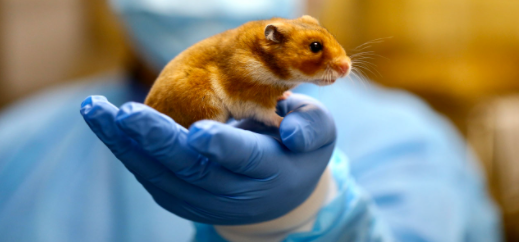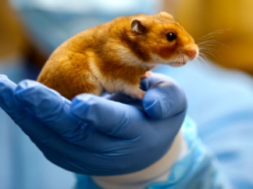
Covid-19: Are pet rodents the primary source of the pandemic?
Virendra Pandit
New Delhi: Even after over two years, China has not admitted that the global pandemic of Covid-19 could have originated in Wuhan’s live animals’ market. But fresh reports from Hong Kong suggest that live hamsters can transmit this pandemic to humans.
According to media reports on Wednesday, a pet shop in Hong Kong was the likely source of the recent outbreak of the dreaded Delta variant in the city.
A scientific study, which has not yet been peer-reviewed, is the first to provide “convincing evidence” that hamsters can become infected in real-life settings, and that they can pass the coronavirus on to humans, as well as to other hamsters.
Hamsters, which look like mice, are rodents popular as small pets. Their owners, including children and women, can carry some of their dwarf species even in pockets or purses. The most common pet hamster is usually smaller than a palm. Known as the Syrian hamster, teddy bear, or golden hamster, it often grows only up to six inches.
The latest data suggested that a pet shop in Hong Kong may have led to a recent outbreak of the Delta variant in the city where at least 50 people got infected and led to the culling of over 2,200 hamsters.
Hamsters are particularly vulnerable to the virus and have been routinely used for studying the disease.
Concerns that hamsters could also infect humans first surfaced when a 23-year-old worker at the pet shop in Hong Kong tested positive for Covid-19 on January 15 this year. It was the city’s first Delta variant diagnosis for over three months. A woman who visited the pet shop was also infected, and other members of her family tested positive too thereafter.
Investigators found none of the hamsters in the shop had overt symptoms of Covid-19 but detected viral genetic material (antibodies) in 15 of 28 Syrian hamsters.
This prompted Prof. Leo Poon, a virologist at the University of Hong Kong, and his colleagues, to undertake further viral genome sequencing of the samples. They found that all the hamsters were infected with the Delta variant and that their viruses were closely related.
The nature of the mutations in these viruses suggested that transmission had been going on for some time – possibly since mid-November 2021. They imported the hamsters from a supplier in the Netherlands during December and January, the media reported.
Also, analysis of samples from the pet shop worker and infected customer suggested that their viruses were closely related to the hamster viruses, but they were unlikely to have transmitted the infection to each other.
“Both genetic and epidemiological results strongly suggest that there were two independent hamster-to-human transmissions and that such events can lead to onward human transmission,” Prof. Poon said.
Even after replicating in hamsters, the coronavirus could still transmit between humans quite effectively. Although the global pet trade is now a likely route for viral spread, humans could also be a faster source of the outbreak.
The findings highlight the possibility that the coronavirus may spill over to other animal species without being detected, providing an opportunity for further mutation and potential spill-over back to humans.














